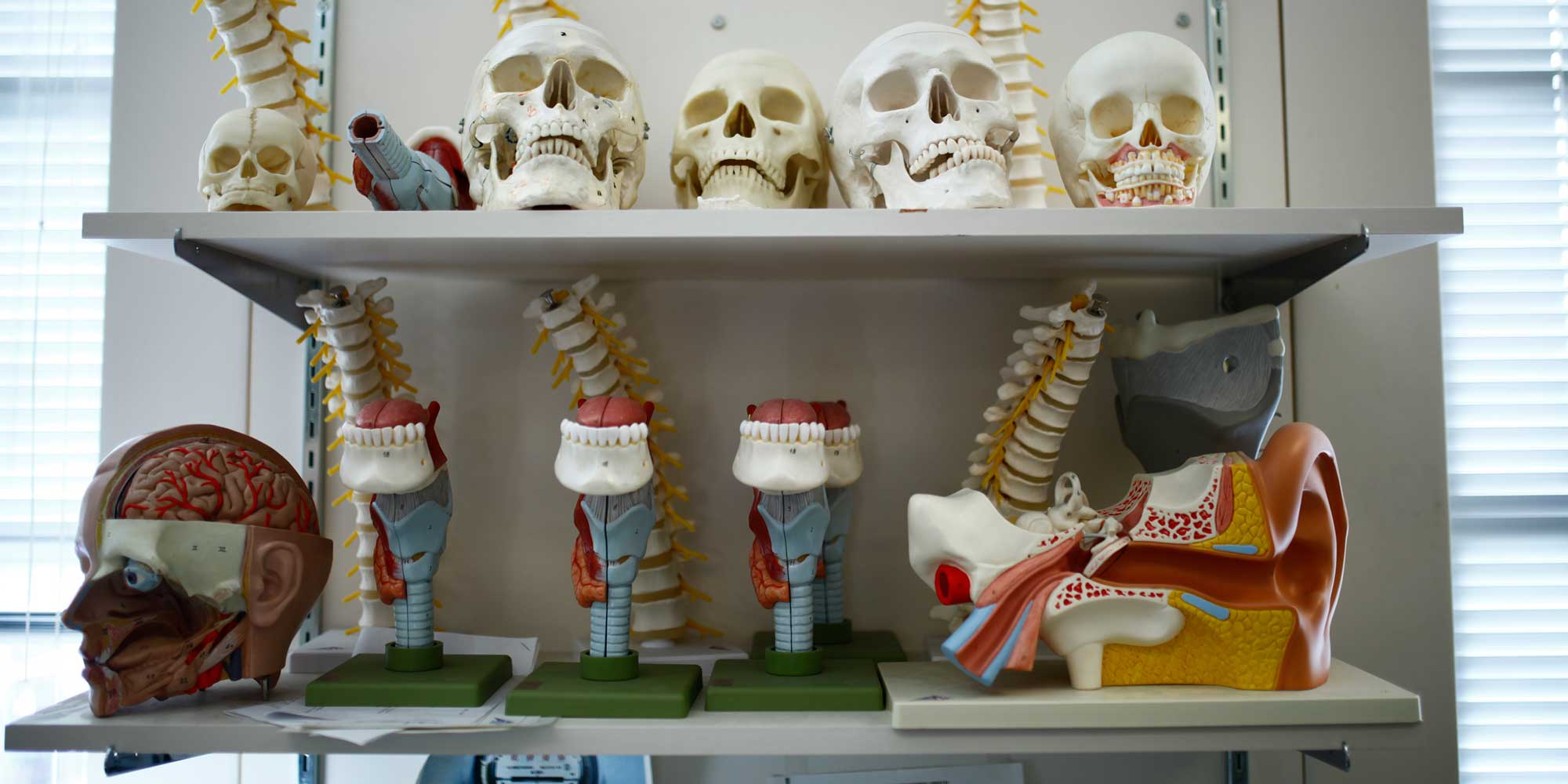Our research covers the structure of language at all levels, with substantial coverage of phonetics, phonology, syntax, and semantics.
Our approach incorporates different methodological traditions and backgrounds, with particular strengths in formal-theoretical linguistics, experimental linguistics, field linguistics, acquisition, and computational approaches. As these research areas intersect and overlap, our faculty and students are similarly involved in more than one area.
Research Resources
Our faculty members helped to create a variety of significant resources.
ArtiSynth is a 3D modeling platform that supports the combined simulation of multibody and finite element models, together with contact and constraints.
A project using ultrasound and video imaging of speech sound articulations to help students learn exactly how we make the speech sounds of the world’s languages. Useful for both linguists studying articulatory phonetics and students of particular languages trying to figure out how to pronounce sounds appropriately.
The Infant Bookreading Database (IBDb) is a data set that was created by Carla Hudson Kam and Lisa Matthewson in the Department of Linguistics at the University of British Columbia. It contains information on English-language books being read to children aged 0-36 months, and is being provided for use by researchers interested in children’s books and bookreading.
It is available for download (see below) in two formats, csv and txt. There is an accompanying Read Me file (in pdf format) that details the organization of the data.
In the survey, caregivers were asked to list up to 5 books that they were reading to their child frequently at the time. They also answered some questions about the child and about themselves. The resulting dataset contains over 1100 responses. 1058 of the responses are complete, meaning that respondents answered all of the questions about the child and themselves and entered at least one English-language book title. 1091 of the responses contain full information about the child, and at list at least one English-language book.*
Respondents generally listed only titles, but the dataset contains information on authors/publishers as well whenever possible. More details about the survey and the data are contained in the following paper:
Hudson Kam, C. L. & Matthewson, L. (2016). Introducing the Infant Bookreading Database (IBDb). Journal of Child Language. doi:10.1017/S03050009116000490
If you use this data, please cite this paper.
*A few of these were initially incomplete but were possible to complete according to the responses given (e.g., the responses indicated that the child did not produce any words yet, so the lack of response to the question about two-word sequences could be filled in with a no). If a response could not be confidently inferred, it was not. For example, a child who was indicated to be producing two-word sequences as well as sequences of more than three words would almost certainly have a vocabulary of larger than 10 understandable words, but since the former do not strictly entail the latter, the question about 10 understandable words was left blank despite the responses to the questions about word sequences. In the end, 12 responses were missing some information about the child that was not inferable, (e.g., a 13-14 month old child listed as producing 10 understandable words, no sequences of more than three words, but where the question about two-word sequences was not answered).
The Online Linguistic Database (OLD), is a free, open-source software for helping to facilitate linguistic fieldwork in terms of data collection, storage, and analysis.
A free, open source software to facilitate doing phonological analysis on transcribed corpora.
A free, open-source software to facilitate the phonetic transcription of sign languages.
A resource site for the use of storyboards in fieldwork. Storyboards are a language data collection technique that tries to gather authentic speech with as little influence from English as possible.
The UBC Linguistics Department is also a publisher. We publish Working Papers, Occasional Papers, and publications related to several regular conferences.
First Nations Languages
The Department has a strong commitment to the study of Languages of the Americas, with particular focus on First Nations Languages of Canada. We are particularly known in the areas of documentation and theoretical research. Our faculty are currently working on projects in languages from numerous language families including Algonquian, Austronesian, Iroquoian, Na-Dene, Otomanguean, Salish, Tsimishianic, Uto-Aztecan, Wakashan, and Yokuts.
Research Areas
We have a long history of work on the structure of language as well as languages around the world including Niger-Congo, Indo-European, Japonic, Semitic, Sino-Tibetan, Uralix families, Korean, and American Sign Language. Discover faculty members in the Department of Linguistics that specialize in the following research areas.
